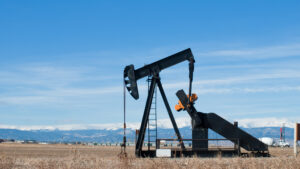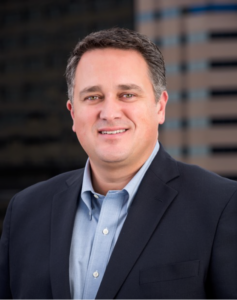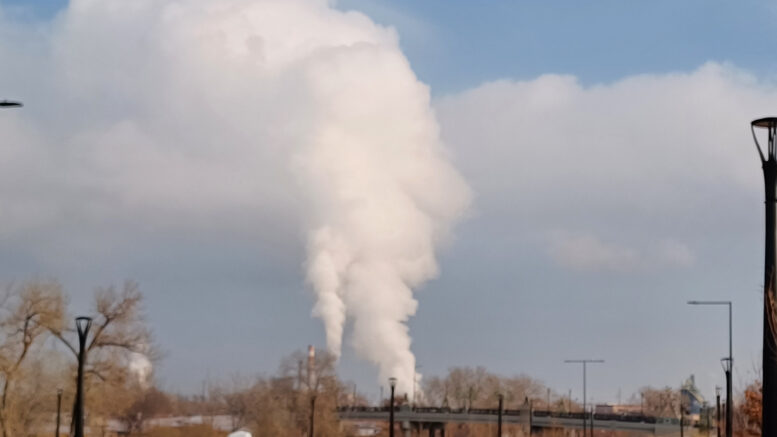Colorado regulators have proposed long-awaited rules to rein in the cumulative impacts of multiple sources of air pollution on communities — rules that oil-and-gas industry leaders say are both achievable and problematic in specific ways.
The draft rules on cumulative impacts, issued Thursday by the Colorado Energy and Carbon Management Commission, particularly ask well operators to forecast and limit the intensity of nitrous oxide (NOx) and greenhouse-gas emissions. They do not, however, go as far as some environmental groups have requested and seek to require caps on the overall amount of emissions that are produced around communities already subject to higher levels of industrial or energy-sector emissions.
The CECMC — formerly the Colorado Oil and Gas Conservation Commission before a name change enacted last year — has opened the draft proposal to comments and will look to vote on final rules in late April. However, legislators who demanded the commission finalize a definition of cumulative impacts in a 2023 law to study ozone pollution and who may be unhappy with its final determination could still seek to affect their own definition through legislation this year.
The push to define cumulative impacts
State regulators have been working to develop a definition of cumulative impacts since passage of a landmark 2019 law that boosted drilling-sector rules, with subsequent laws pushing to speed the definition process up as a means of environmental justice. The idea was that officials should look differently at air-quality-permit applications from emissions producers seeking to expand in areas that already are dealing with a bevy of industrial and energy companies and that may be leery of impacts from further operations.
In its proposal, the CECMC defines cumulative impacts as “the addressable combined impacts from oil and gas operations on public health and the environment, including the impacts on air quality, water quality, the climate, noise, odor, wildlife and biological resources and to disproportionately impacted communities.” The document then says that in evaluating cumulative impacts, the commission may consider the incremental impact from proposed operations in addition to any operations, including industrial or manufacturing facilities, within one mile of a proposed location.

Oil pumpjack against snowy mountains in Colorado.
To do that, the proposal specifies that operators of such proposed new locations will participate in pre-application consultations not just with the state but with local governments, community liaisons and residents within 2,000 feet of their potential sites. They then must submit plans to offset potential adverse cumulative impacts and must demonstrate to the CECMC that they will comply with nitrous oxide and greenhouse-gas emission intensity targets by calculating intensity for all current and proposed operations.
The proposal elicited mixed reactions from oil and gas operators who had been waiting to see what the state would demand from them. Several environmental advocates who have pushed the CECMC to finish its rulemaking on this subject either told The Sum & Substance that they haven’t had the chance to review the draft yet or did not return emails seeking comment.
NOx and greenhouse-gas emissions intensity
The focus on the NOx and greenhouse-gas emissions intensity is likely to draw scrutiny from both interest groups, however — even as the Colorado Air Quality Control Commission recently approved rules for well operators to meet new NOx intensity targets.
Kait Schwartz, Colorado director for the American Petroleum Institute, said that while operators already will be providing emissions-intensity information to the Colorado Air Pollution Control Division, she doesn’t understand why the CECMC would need it also. Also, she warned, it will be near impossible for operators to project NOx intensity for years out as the rules require, especially as they don’t know how equipment will advance over that time and how long they will be able to drill a particular well.

Kalt Schwartz is director of American Petroleum Institute Colorado.
Meanwhile, some environmental groups are likely to be concerned that the limits on cumulative impacts of new operations will focus on the intensity of those operations rather than on the absolute amount of pollution that will occur in any area. Some groups have sought caps on pollution, though state officials have said that would be both difficult and potentially illegal to enforce.
Limits to summer drilling?
Schwartz also questioned a provision in the draft rules that requires, beginning in 2025, any previously permitted pre-production or fracking activities within the EPA-designated Ozone Nonattainment Area between May and September to be authorized by the CECMC director. The state can monitor but not limit such activity now in the nonattainment area stretching along the Front Range from Douglas County to Wyoming, but it can’t disallow it — and operators would like clarification on what new powers the rule may grant it.
“There is definitely a regulatory burden that comes along with these rules in terms of timing and meetings and the commission,” Schwartz said. “The idea that before you are able to drill during the ozone season you must get signoff from the director and both agencies (CECMC and the Colorado Department of Public Health and Environment) is new.”
Schwartz said she was pleased with the way the proposed rules beef up the pre-application process to necessitate meetings between operators, local governments and communities, which can bring everyone to the table to work out issues.
Bringing more people into discussions of cumulative impacts
But other oil-and-gas industry leaders said that they were more concerned about the inclusion of communities in pre-application meetings. Traditionally those meetings have been geared toward finding the right location within a community for a project, but putting local leaders at the table from the start might create a push from them to move the project to another community — one not necessarily invited to those same meetings.

Dan Haley is president and CEO of the Colorado Oil & Gas Association
“This will be a complicated rulemaking, but our hope is we can end up with rules that continue to protect Colorado’s communities and that acknowledge the vital work industry has done to reduce emissions and impacts,” said Dan Haley, president/CEO of the Colorado Oil & Gas Association. “Those rules should, however, respect and acknowledge the ECMC’s jurisdiction and expertise, align with CDPHE’s rules and regulations without duplication and not cause further unnecessary delays to an already complicated and slower permitting process.”
Adoption of the new rules will come as legislators discuss if they want to put further air-quality protections into place following years of complaints from cumulatively impacted communities that their public health is being ignored. An interim committee tasked with studying ozone pollution discussed ideas such as ramping up modeling requirements for permitting and aggregating well permits to increase regulation over them, but it’s yet to produce any bills in the two-week-old session.
